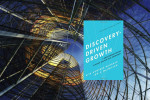Product Leaders on Product Management

Author Jon Kolko includes interviews with six product leaders who give their perspective on design and product management. The interviews are a treasure trove of opinions and insight on product design, development, and management from people who have built great products.
Well-Designed: How to Use Empathy to Create Products People Love by Jon Kolko
Joe Gebbia, co-founder and Chief Product Officer of Airbnb (@jjgebbia)
The best way to learn product development, to learn the difference between design and product management, is to start something and do everything yourself. You’ll intimately understand the tensions between the creative side and the ‘ship it’ side.
Gebbia traces his path through product development: beginning with designing physical products which would end up in a landfill to a web-based business which did not have a physical component, to Airbnb which helps people repurpose physical spaces they already own. Like Kolko, he believes that the best way to make great products is to build empathy with the people whose problem you are trying to solv.
In small companies, everyone is just making, but as organizations grow, people specialize resulting in a split between engineering, design, and product management. Although everyone should work as part of a cohesive team, Gebbia is a believer in specialization, rather than encouraging designers to code and engineers to design.
Gebbia believes in “vision led, customer informed” product development. He articulates an experience that he wants to create for people who use a product or service and lets the team “fill in the blanks.” Although he has a very powerful analytic team, he points out that “data doesn’t answer the question why.” Understanding the why requires research and insightful customer contact.
Josh Elman, Greylock Partners (@joshelman)
It’s important and really powerful to get out of your own head and think about how other people will engage with a system or product, and make sure you are making choices that are meaningful to them, not to you.
As an investor and advisor to tech companies, Elman loooks for network effects and progressive commitment around what he calls a “foundational asset.” Foundational value is a deep value proposition that connects with a human need. In consumer companies, he also seeks to understand where and how the company aggregates consumer attention–are people coming to your product or service to get something they can’t get elsewhere?
Elman does not subscribe to the “mini-CEO” definition of product management. Rather, he views product manager’s role as helping their team ship the right product. This involves producing artifacts based on consensus conversations, understanding their customers, and setting a compelling vision for the team. Great product managers are great storytellers who can describe a future user experience that ignites creativity. Humility and great listening skills are critical for bringing multiple perspectives to bear on the creation of a new product.
It’s less about what you do and more about what artifact you make.
Elman says there are four key product management deliverables: the consensus roadmap, a product spec, a positioning statement, and a detailed plan.
Gary Chou, Union Square Ventures (@garychou)
When you are failing, that’s when the processes matter, your assumptions are being challenged, you have to create better solutions, and you have to figure out what does or doesn’t work.
Working with his portfolio companies, Chou realized that there isn’t a single model for product management that works for everyone. Vision, for example, can be owned by the head of product or by the founders.
Product management is the art of keeping everything moving together.
I can’t think of an example of a great product manager who is a polarizing figure or is egocentric.
For Chou, product management, although execution-oriented, isn’t “about tactics and skills, it’s etiquette and culture.” Chou’s primary product management metric is whether progress is being made and reducing friction–and that doesn’t happen by seeking more control of the situation. A product manager is a “shepherd.” Rather, Chou says that the ability to ask good questions and think deeply is what makes product managers effective. Intuition plays a key role in early product companies because not enough is known about the market to write a formal product requirements or marketing document.
Ultimately, great product managers identify how they want people to feel and work back from there. Chou sees the evolution of product management from a heavy user experience focus to “Hey, you should really consider how people feel.” He stresses that building great products is not a rational process. It entails experimentation and failure and benefits from passion, curiosity and empathy.
The thing that would have made me a better, more effective product manager would have been to be a more active participant in the community I was designing for.
Mark Phillip, CEO of Are You Watching This?! (@markphillip)
For many people, it’s an analytical process. For me, it’s gut. People ask me if I did any market research when I first started. I didn’t. I’m just building a site I always wished existed.
If you were a product manager dropped into something you know nothing about, the first and hardest part is figuring out your customer.
For Phillip, the key to effective product management is identifying pain points and understanding your customer. Once you have a handle on that, building a product becomes much easier, as long as you have restraint. You can’t add every single feature under the sun into your product.
The product that you build has to have a demographic in mind, or else you’ll try to please everyone and it just won’t work.
Close connection to a well defined set of customers is critical. That’s why Phillip says “it’s important to practice making people talk” so you can understand the problems and context of your customers.
Frank Lyman, Chief Product Officer, MyEdu
You can have a lot of people who are technically very sophisticated, insightful, and competent who don’t succeed as product managers because nobody wants to follow them–because they aren’t effective communicators or collaborators.
Lyman defines product management as “the function in an organization that pulls together the initiative, the resources necessary to make it successful, and gets it implemented.” Solid business skills, an understanding of marketing, and finding patterns in data are all key characteristics of a great product manager. The ability to quickly understand diverse subject matter domains and remain conversant is also important for gaining credibility. Subject matter expertise can help, but being in tune with the company culture (marketing, engineering) also enables a product manager to be effective.
Ideas are cheap. That’s the essence of being a product manager. Ideas are nothing. This isn’t R&D. It’s just D. You are measured on execution.
Product managers “spend equity” when they make decisions and shouldn’t be “overly dramatic” about successes and failures. Learning should be visible and a natural part of the process. Your opinion doesn’t matter–you aren’t the target market.
Empathetic design is a more vulnerable approach to thinking about how you build products. It’s saying, ‘I’m willing to more deeply engage with these customers and really empathize with them.’
true empathetic design is where the big ideas are. And product managers want to be associated with the big ideas. The good ones don’t want to be on the margins.
Alex Rainert, Head of Product, Foursquare (@arainert)
I set the stage for people to do their best work.
Some product managers struggle with this. It’s not about making your idea happen. It’s about helping the best idea happen. You have to, as a product manager, be able to separate yourself from the problem. Some people might never be able to do it.
Rainert emphasizes supporting product and design leads to own their areas by setting vision and prioritizing across the organization. In his interview, he discusses scaling product organizations. Shared understanding is easier with a small number of people, but as the company grows, specializes, and tackles a larger variety of issues, getting everyone on the same page becomes more difficult.
how do you make a roadmap when you have 150 people?
When hiring, Rainert looks for strong analytic skills along with a passion for design. Data orientation must be blended with an understanding of the human and social side of technology products.
My product managers should have the best understanding of the user’s problem that we’re trying to solve.
They are able to look at a design, work with designers, and say, ‘This is great, but I don’t think it solves the problem due to x, y, and z.’
If there isn’t a shared understanding of what the problem is, you can literally debate the solution forever.
He notes that although design used to be a differentiator, now it’s table stakes. Like other product leaders interviewed in the book, he discusses the balance between having data, for example A/B tests, and designing the overall experience. For Rainert, some decisions must be driven by intuition and discovery. Rainert sees a spectrum of product companies between thoughtful, design centric companies (Apple, Path) and experimenters / data driven decision makers (Google). Somewhere in between is facebook with it’s “move fast and break things” but also “make beautiful things.”







